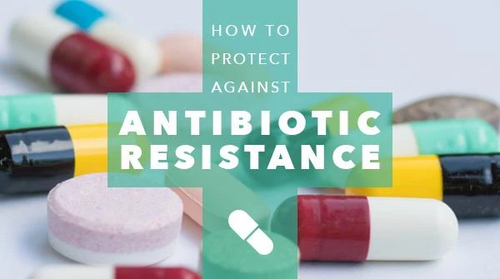We are living through unprecedented times.
Feeling jittery and nervous is thoroughly understandable at this point. But never finding the off switch turns worry into anxiety, the body’s fight-or-flight response to a perceived threat. And extended periods of anxiety can, among other things, weaken your immune system.
Fortunately, there are techniques you can use to calm your qualms before they run away with you.
Take a Breath
Start by tuning into your physical response and taking some deep breaths, says clinical psychologist Seth Gillihan, PhD, host of the Think Act Be podcast and author of The CBT Deck (PESI).
“Practice noticing the anxiety in your body as early as possible; maybe you notice your breath getting shallow,” Gillihan says. “Then take a calming breath in and a slow exhale. Most of the relaxation we get from breathing comes on the exhale.”
Controlled breathing can activate the calming part of the nervous system, which in turn slows the stress response, according to researchers writing in the journal Frontiers in Human Neuroscience.
Try it by taking in a deep breath, exhaling slowly while imagining that you are exhaling out your worries. You can even say “Ahhhhh” as you do it, says psychotherapist and former monk Donald Altman, author of Reflect: Awaken to the Wisdom of the Here and Now (PESI). “It slows everything down and even gives your heart a rest,” he explains.
Turn on the Tunes
Mellow music can keep the body from going into fear mode, while upbeat rhythms can shift one’s energy from uptight to fun and motivated, even celebratory. The key is to pick sounds and songs that you appreciate and enjoy.
Career coach Melody Wilding, LMSW, recommends tuning into music with binaural beats, the sounds created by playing two different frequencies at the same time. Such music prompts relaxing brainwave changes, according to a study published in the journal Alternative Therapies in Health and Medicine.
Check out the playlists found on many streaming music services, including Apple Music and Spotify, or the free recordings on YouTube.
Get Moving
Moving your body can also move your mood. Numerous studies have found that exercise and motion help manage anxiety.
According to Gillihan, simple stretching exercises like reaching out wide with your arms can counter the normal tendency to shrink and hide when you are anxious. The slow, deliberate movements in tai chi and yoga encourage deep breathing and focus, while aerobic exercise, such as a brisk walk or jog, can decrease tension levels, stabilize mood and improve sleep.
“Moving and stretching and exercise can get us unstuck from the freeze part of our fear response,” Gillihan says.
Write It Out
Clearing some of the mental clutter by writing out your concerns can be a good way to limit the power of anxiety-producing thoughts.
Research has shown that pouring your emotions out on a page for about 20 minutes a day can be effective.
Wilding recommends a technique called “release writing” as a way to process emotions. “Start with the structure ‘I feel,’ and fill in your emotion, then pour out all your thoughts and reactions onto the page,” she says.
Gillihan suggests making a to-do list. “Anxiety can come from a lack of direction, like when we’re drifting at work and unsure what to focus on,” he explains. “Make a list of the three most important things you plan to accomplish for the day, then focus on the first; fold over the list so you can only see the one task you’re working on. Forward progress can be a big antidote to anxiety.”
Chew Gum
Can a square of bubble gum help settle your nerves? Research indicates it might.
In one study, participants were asked to chew gum twice a day for 14 days and then report on their mood and fatigue levels; their results were compared to those of a group that didn’t chew. The chewers were significantly less anxious and fatigued than the non-chewers, according to results published in Clinical Practice & Epidemiology in Mental Health.
It hasn’t been determined why the benefits of gum chewing were so pronounced; researchers speculate that it was perhaps the chewing process, the sensory experience of the flavor and texture.
Give It A Name
When caught up in nervous feelings it’s easy to begin ruminating; as emotions intensify, anxiety can then run away with your thoughts. But we can rein in those feelings by giving them a name, according to research done at the University of North Carolina.
It was found that labelling emotions helps your brain assign meaning to feelings. That process helps you appraise the situation; you may realize that you’re not feeling anxiety at all, but a cousin like confusion, bewilderment, caution or vulnerability.
Creating an emotional vocabulary can help you deal better with whatever you’re experiencing.
Change Your Environment
Moving to a different space can also help us move to a different emotional state. “A change of environment can be a big help, especially if you are sensitive and easily stimulated,” Wilding says.
Going outside is the best move you can make. As Gillihan puts it, “There’s something about having green all around us that is inherently calming.” That’s because focusing on vegetation and greenery can help you escape the loop of negative thoughts that you can get trapped in when you’re anxious.
Even walking where there are a few trees and really noticing them can be soothing. In fact, the calming sounds found in nature, and the pockets of deep quiet one finds in the woods, have been found to help lower blood pressure and cortisol (stress hormone) levels.
If you can’t get out, even listening to a tape of nature sounds or looking at pictures of naturescapes can help create calm.
If It’s Really Bad, Seek Virtual Help
Anxiety can be especially problematic if you live by yourself, particularly since being around other people is really not an option right now—and that includes visiting a therapist.
Fortunately, online help is available. You can do your own search or search Find a psychologist | BPS
†The information provided is not an endorsement of any product, and is intended for educational purposes only. NaturesPlus does not provide medical advice and does not offer diagnosis of any conditions. Current research on this topic is not conclusive and further research may be needed in order to prove the benefits described.
**These statements have not been evaluated by the Food and Drug Administration. This product is not intended to diagnose, treat, cure or prevent any disease.
**These statements have not been evaluated by the Food and Drug Administration. This product is not intended to diagnose, treat, cure or prevent any disease.



